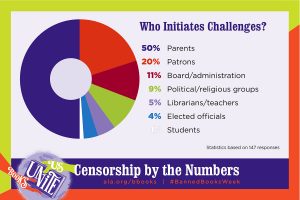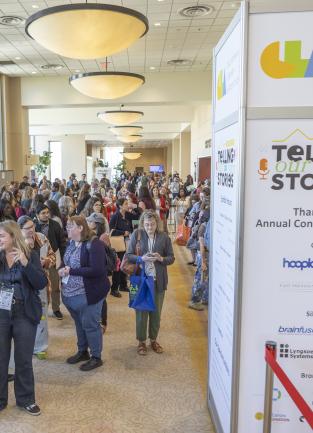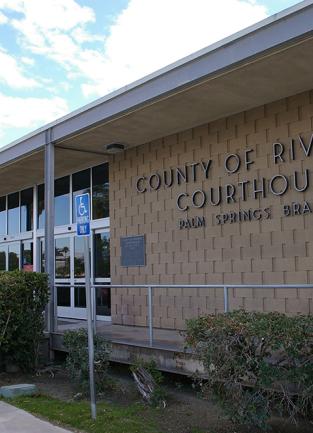Challenged Books and the Ambiguity of Freedom of Choice

April 1, 2022
You may have heard about book challenges, particularly in school libraries, recently. The debate to censor or restrict materials can be a dividing and contentious topic, calling into question the boundaries of freedom of speech and the right to access information. Amidst this debate, the ABA’s National Law Day Theme, “Toward a More Perfect Union: The Constitution in Times of Change” invites us into discourse in what the constitution, and the first amendment, mean to us.
This blog intends to give you the basics surrounding book challenges to better understand the process and why these challenges come about. A second blog posted later this month will dive deeper into the legal process, looking at cases, bills, and codes. To begin, I’ll be defining what a book challenge is, then move towards how a challenge is processed, why books are challenged and what libraries and parents say about book challenges.
Challenge vs. Ban
The difference between a challenge and a ban is that a challenge will restrict access or is an attempt to remove materials while a ban is to remove the materials[1]. Book challenges are initiated by a member(s) of the public and request that the library remove a book(s) from its shelves. Most libraries have a procedure in place where the concerned person fills out a form with details of the book (title and author) and what specifically is the concern with the book. The form would be submitted and reviewed by an administrator- for public libraries the director, for school libraries, the school board, etc. Once a decision is reached, the initiating person is contacted and informed of what the decision is.
How many challenges are there?
The actual number is difficult to track, as the lists that the American Library Association (ALA) creates is compiled from voluntary reports sent into ALA’s Office of Intellectual Freedom. In 2020, there were 156 challenges to library, school, and university materials and services. Statistics for 2021 and 2022 are not compiled yet but in a press release on November 29 from ALA, it stated the Office of Intellectual Freedom had tracked 155 challenges since June of 2021[2].
Most challenges were initiated by parents, according to ALA’s statistics.

Why are books challenged?
There are many specific reasons that people cite for challenging books, but ALA consolidated the challenges into the broader topics. The top three reasons for book challenges were:[3]
- the material was considered to be "sexually explicit"
- the material contained "offensive language"
- the materials was "unsuited to any age group"
Many of the recent book challenges cited race, gender and sexuality as concerns. Determining what one person would consider explicit, offensive or unsuitable can be a subjective endeavor and leads into restricting access for some takes away the freedom of choices for others. This quandary is one reason why the materials challenge forms at libraries requests a narrative explanation for why this book should be pulled.
What do libraries say about book challenges?
ALA has published a Library Bill of Rights with the first statement being “materials should not be excluded because of the origin, background, or views of those contributing to their creation.” The Office of Intellectual Freedom explains further in Access to Library Resources and Services for Minors “Librarians and governing bodies should maintain that parents—and only parents—have the right and the responsibility to restrict the access of their children—and only their children—to library resources.” In other words, parents and caregivers have the responsibility to decide what library resources their children can have access to and libraries and governing bodies would not assume the role of parent by restricting access to materials.
What do the people initiating challenges say?
Since there is no one organization that all people requesting a materials review belong to, we’ll focus on one school district, Leander Independent School District (LISD) in Leander, Texas. Following parents’ concerns of book choices from student led book clubs, LISD created a Community Curriculum Advisory Committee (CCAC). The CCAC reviewed 140 book club titles and recommended pulling 11 from school libraries’ shelves. One of the criteria for assessing the titles was labeled Student Navigation of Text, Topics and Themes: did the book contain sensitive content; was it age appropriate, can the book stand alone without needing additional adult support, and will students understand what is going on?[4] At the February 25, 2021 school district meeting, one parent stated that they were not asking to ban books, they were asking for “age appropriate reading material that advances independent thought and critical thinking.”[5]
In Summary
We defined the terms “challenge” and “ban,” found out there have been 155 materials challenges between June and November 2021, learned that the top reason for challenging materials is that they are considered sexually explicit. We saw that the ALA states in their Library Bill of Rights that materials should not be excluded, and that people initiating challenges are concerned about the content of the material and its age appropriateness. The US Constitution in the First amendment declares that Congress “shall make no law …..abridging the freedom of speech[6]” so what is the legal precedent for restricting access to materials in libraries? Our next blog will dive into cases concerning access and legal precedents.
Further Resources:
American Library Association’s Banned Book page https://www.ala.org/advocacy/bbooks
American Library Association’s Office of Intellectual Freedom and Censorship https://www.ala.org/advocacy/intfreedom/censorship
American Library Association’s LibGuide: Researching Banned or Challenged Books https://libguides.ala.org/Researchingchallengedbooks
The American Civil Liberties Union and banned books https://www.aclu.org/search/banned%20books
National council of teachers of English’s Intellectual Freedom Center https://ncte.org/resources/ncte-intellectual-freedom-center/
National Constitution Centers’ Interactive US Constitution https://constitutioncenter.org/interactive-constitution/the-constitution
Scholastic’s How to Find Age-Appropriate Books for Advanced Readers https://www.scholastic.com/parents/books-and-reading/reading-resources/book-selection-tips/find-age-appropriate-books-advanced-readers.html
Children’s Learning Initiative’s Literacy Education and Resource Network https://learn.cli.org/
Columbia University’s Center for Professional Education of Teachers Monitoring reading progress at home: Tips for parents
Written by: Jenna Pontious, Public Services Librarian
[1]American Library Association, About Banned & Challenged Books. Accessed March 24, 2022 https://www.ala.org/advocacy/bbooks/aboutbannedbooks
[2] American Library Association, The American Library Association opposes widespread efforts to censor books in U.S. schools and libraries. Accessed March 24, 2022 https://www.ala.org/news/press-releases/2021/11/american-library-association-opposes-widespread-efforts-censor-books-us
[3]American Library Association Accessed March 24, 2022 https://www.ala.org/advocacy/bbooks/banned-books-qa
[4]Leander Independent School District’s Community Curriculum Advisory Committee. CI Cycle #1 Executive Summary and Recommendations - EII Graphic Novels. Accessed March 24, 2022 https://docs.google.com/spreadsheets/d/11NPowwC-cAu1rcQ1UuhOz2NGx4NynTnW86uxxiHWUfU/edit#gid=0
[5]KVUE ABC Leander ISD says it removed 6 books from reading lists, drafting new policy regarding 'inappropriate' books published March 8, 2021, accessed March 24, 2022 https://www.kvue.com/article/news/education/leander-isd-book-inappropriate-in-the-dream-house-board-meeting/269-63852d91-f8f7-40f7-8de8-6438c9ca757f
[6] Congress.gov Constitution Annotated Accessed March 25, 2022 https://constitution.congress.gov/constitution/amendment-1/










